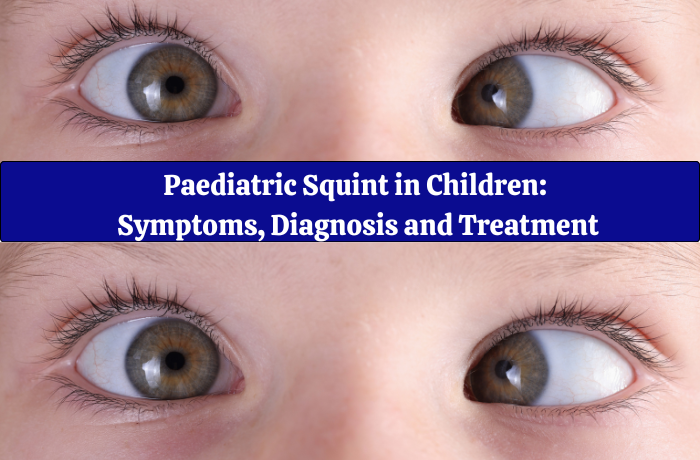Understanding Paediatric Squint
Paediatric squint, also known as strabismus, is a condition where a child’s eyes do not align properly. One eye may turn inwards, outwards, upwards, or downwards while the other eye looks straight ahead. This misalignment can affect a child’s depth perception and vision development.
Symptoms of Squint in Children
Identifying squint in children can be challenging, especially in young ones who may not express their visual discomfort. Here are some common symptoms to look out for:
1. Misaligned Eyes: One eye may appear to wander or turn in a different direction compared to the other.
2. Crossed Eyes: The eyes may turn inward or outward, especially when the child is tired or looking at something close.
3. Difficulty with Eye Coordination: The child may struggle to focus on objects or seem to have difficulty with depth perception.
4. Head Tilting: The child may tilt their head or cover one eye to see better, trying to correct their vision.
5. Frequent Eye Rubbing: Excessive rubbing of the eyes can indicate visual discomfort or strain.
Identifying Paediatric Squint
Accurate identification is crucial for effective treatment. Here’s how paediatric squint is typically identified:
- Eye Examination: An ophthalmologist will perform a comprehensive eye examination to assess the alignment and movement of the eyes.
- Cover Test: This test involves covering one eye to observe the movement of the uncovered eye, helping to identify misalignment.
- Refraction Test: Determines if refractive errors such as nearsightedness or farsightedness are contributing to the squint.
- Visual Acuity Test: Assesses how well each eye can see, which helps in understanding the extent of the squint and its impact on vision.
Treatment Options for Paediatric Squint
The treatment for paediatric squint depends on the severity of the condition and the age of the child. Common treatment options include:
Glasses: Corrective lenses can help manage refractive errors that may contribute to the squint. They can also improve visual alignment.
Eye Patching: Wearing a patch over the stronger eye can help strengthen the weaker eye and improve overall eye coordination.
Eye Exercises: Specific exercises may be recommended to improve the coordination and alignment of the eyes.
Surgery: In some cases, surgical intervention may be necessary to correct the muscle imbalance and align the eyes properly.
Why Early Intervention Matters
Early identification and treatment are essential for the best outcomes. If left untreated, paediatric squint can lead to amblyopia (lazy eye) or other vision problems. Timely treatment can significantly improve the child’s visual development and quality of life.
Expert Care for Paediatric Squint
If you suspect your child has a squint or if you need professional advice, consulting an experienced ophthalmologist is crucial. Dr. Ankita Patil at Nihira Netralay specializes in paediatric squint treatment and can provide comprehensive care tailored to your child’s needs. For expert squint eye treatment in Nerul, Navi Mumbai, consider reaching out to Dr. Patil for a thorough evaluation and personalized treatment plan.
For more information or to schedule a consultation, contact Nihira Netralay today. Your child’s vision health is in expert hands.


